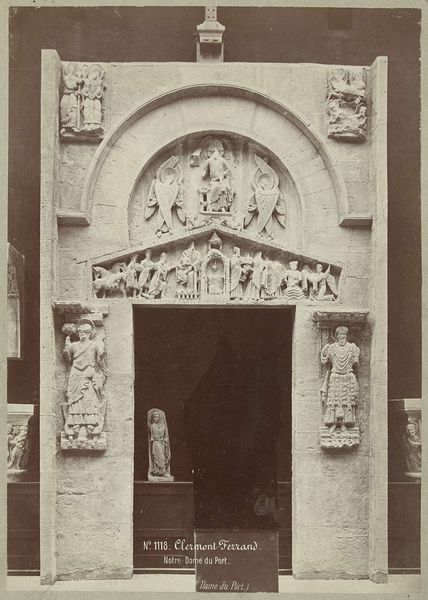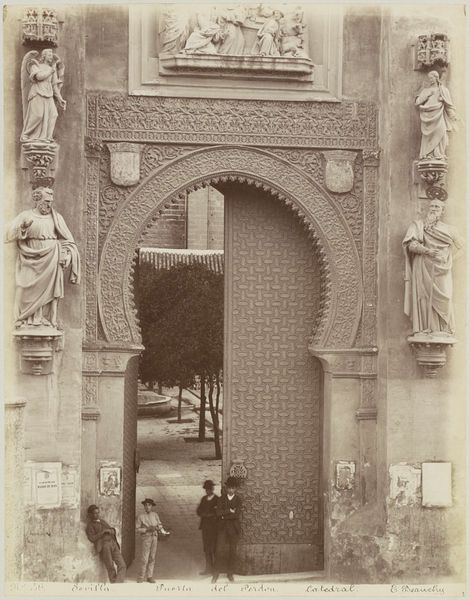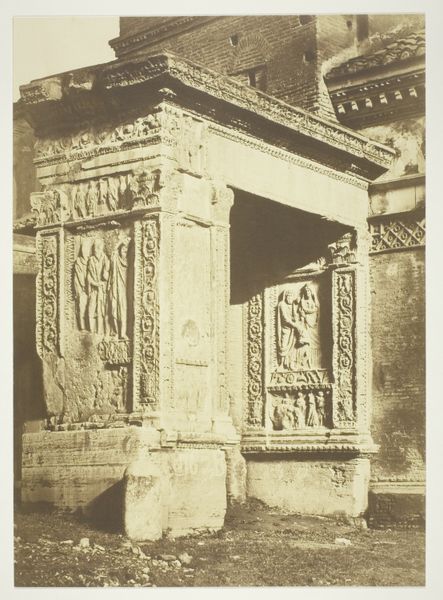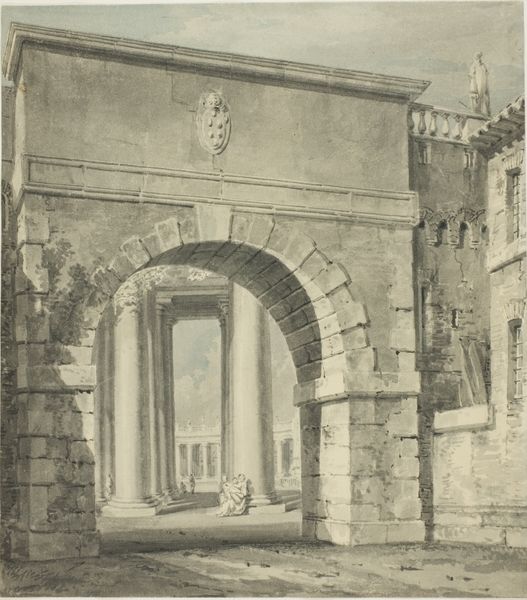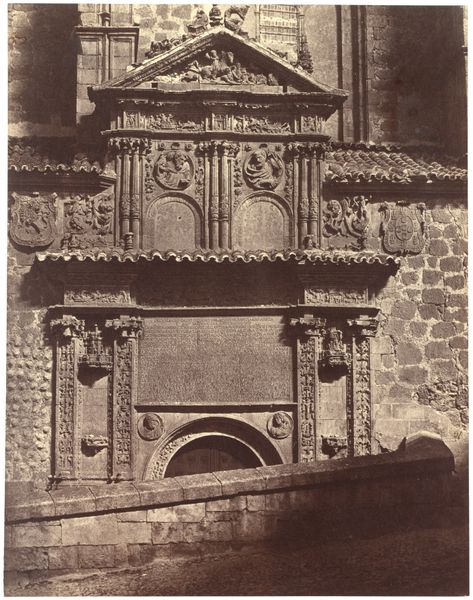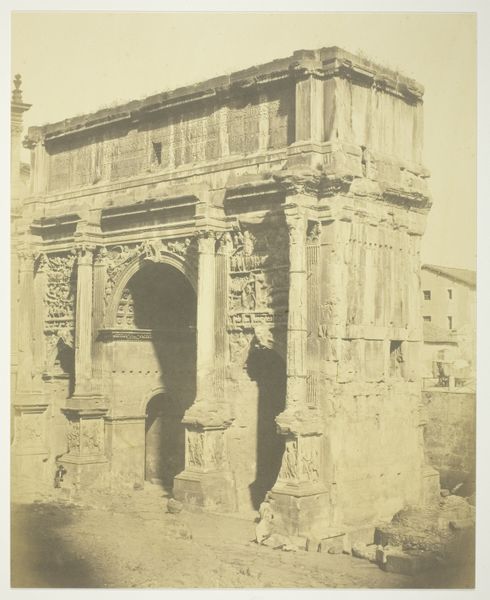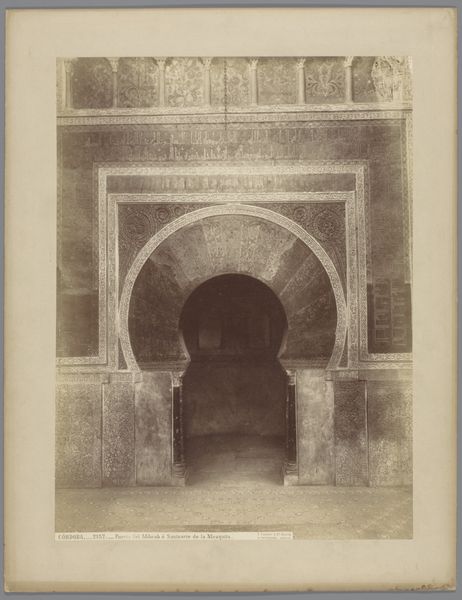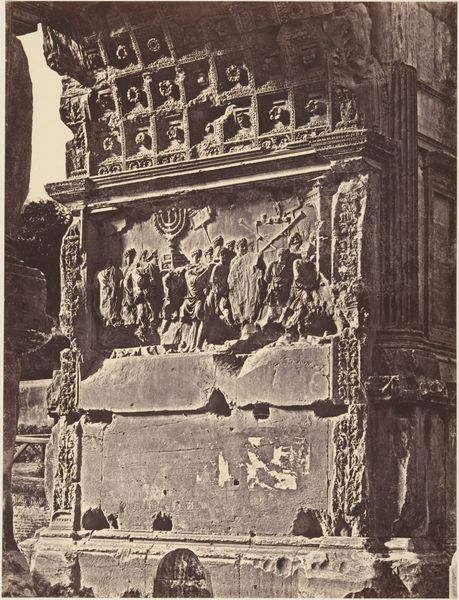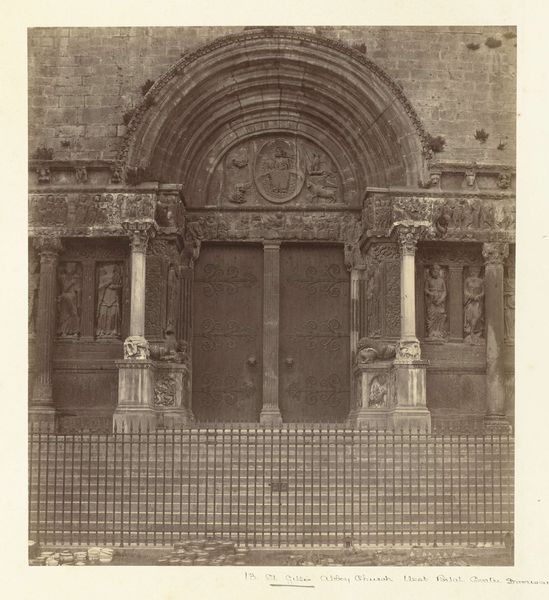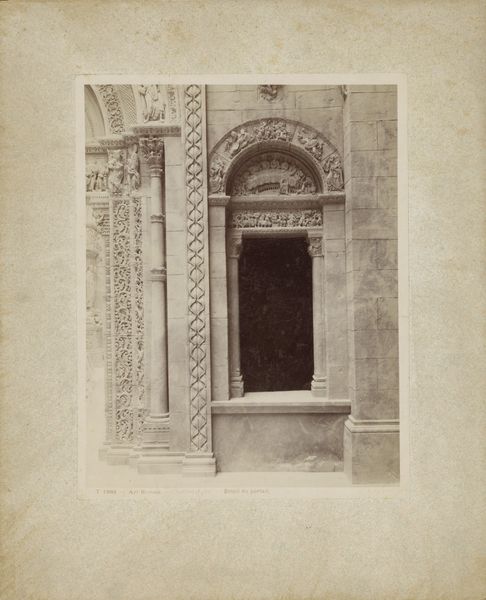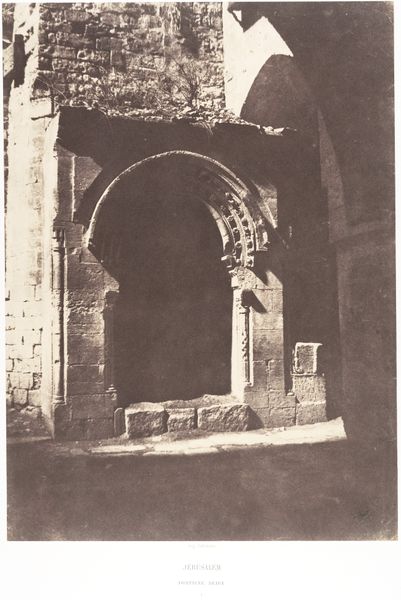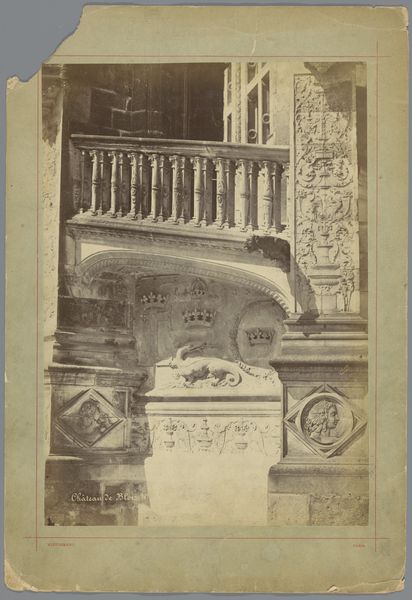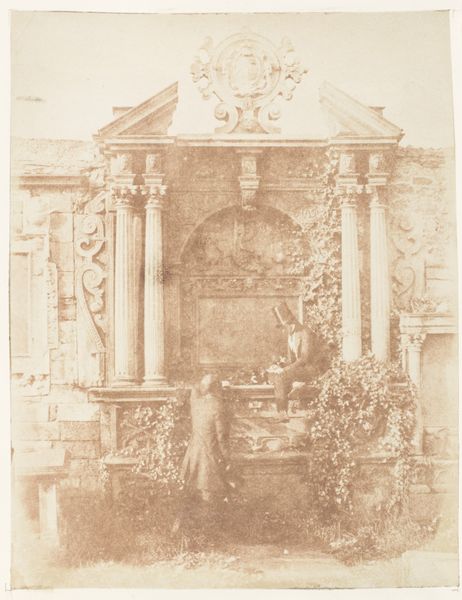
print, photography, sculpture, architecture
# print
#
greek-and-roman-art
#
photography
#
ancient-mediterranean
#
sculpture
#
arch
#
19th century
#
architecture
#
statue
Dimensions: Image: 41 x 31.7 cm (16 1/8 x 12 1/2 in.) Mount: 51 x 47.5 cm (20 1/16 x 18 11/16 in.)
Copyright: Public Domain
Editor: Here we have Charles Clifford’s photograph, "Zaragoza: Porta de los Gigantes," taken around 1860. It’s a powerful image; the scale of the architecture feels overwhelming, even in a photograph. What’s your perspective on this, especially considering its historical context? Curator: This photograph provides us with a fascinating opportunity to unpack the layers of power embedded in architectural representation. Consider, firstly, how photography itself, in the 19th century, served as a tool of documentation and, at times, colonial power. Clifford's choice to focus on such a monumental structure begs the question: whose power is being celebrated, and whose history is being erased or minimized? How might we read this image through the lens of architectural history, gender studies, and even postcolonial theory? Editor: So, you’re saying the photograph itself is making an argument about power and history? Curator: Precisely! Think about the symbolism inherent in the "giants" flanking the archway. Who did they represent, what social structures and gender dynamics are literally being supported and framed? Also, note how Clifford positions the viewer. Are we invited to enter, or are we positioned as outsiders, gazing up in awe? How does this positioning affect our understanding of the power dynamics at play? Editor: That makes me consider how the local people perceived this gate in their city. Was it a symbol of pride or oppression? Curator: An excellent question! We can analyze period texts, literature, or even other visual materials to find such possible contrasting reactions and opinions regarding how the photograph of Clifford portrays not just a city gate, but an actual place to feel or contest its cultural memory. The photograph is but a still moment of a longer dialogue through history. Editor: Thanks; I’ll certainly look more carefully now. Curator: Indeed. Hopefully you understand now the cultural heritage that opens up for all who reflect critically.
Comments
No comments
Be the first to comment and join the conversation on the ultimate creative platform.
